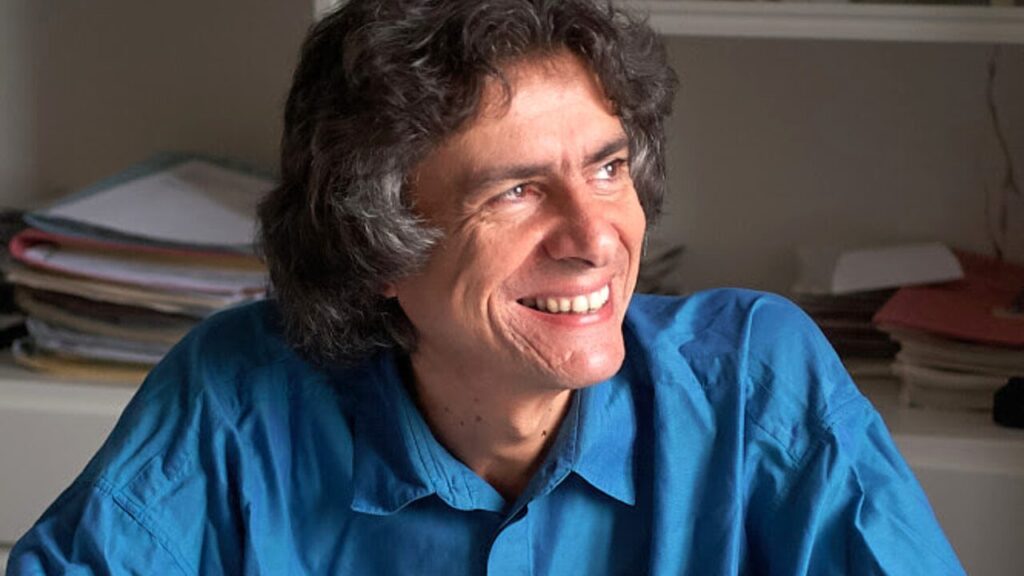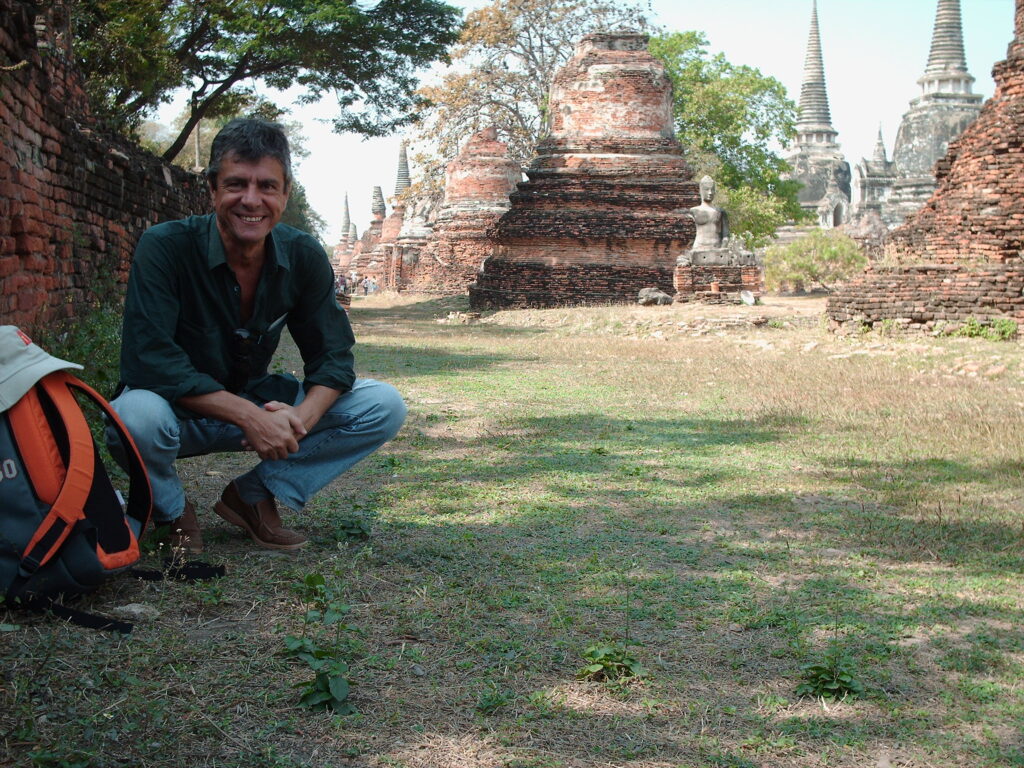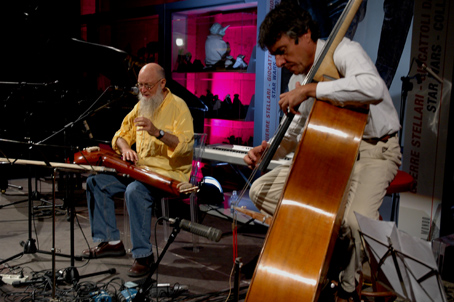
Introduction
The 20th century was a time when the guitar served as a fertile ground for the exploration of technical and expressive resources, aligning with aesthetic movements focused on renewing musical composition. In an era of profound transformations—where formal exploration was primarily approached at the compositional level—the guitar allowed for the invention of optimized strategies by performers. Within this context, the guitar repertoire contributed to redefining instrumental challenges.
A significant figure of this period was Stefano Scodanibbio (1956–2012), a double bassist, composer, and promoter of contemporary music. Although his most well-known legacy is tied to the performance of paradigm-defining works for the double bass repertoire, his contributions as a composer left equally indelible marks on the history of the past century. His work embodies the exploration and redefinition of the sound paradigm from an instrumental perspective. In this process, the guitar holds a privileged position.
In discussions surrounding the aesthetic shifts that occurred between the 20th and 21st centuries, the unique contributions of Scodanibbio’s guitar repertoire have been given relatively little attention. The primary aim of this text is to examine the core elements of the poetics that Scodanibbio developed in his works for guitar. Part of the narrative presented here has been reconstructed thanks to valuable testimonies from individuals close to the composer, including Federico Bañuelos, Elena Casoli, Maurizio Pisati, and Magnus Andersson.
The virtuosity that emerges from Stefano Scodanibbio’s poetics fits within the broader search for renewal in musical practices. It is articulated through strategies revolving around three main axes: (i) the reconfiguration of the artist’s image, reconciling compositional and interpretative practices within a symbolic framework broader than that of the virtuoso; (ii) the search for innovation in musical language through instrumental means, integrating elements of tradition; (iii) a compositional approach based on the use of improvisation as a method of formalization.
The Image of the Artist
“What remains and what is lost of a life?” This is the question posed by philosopher Giorgio Agamben (1942–) at the beginning of the introduction to a text that compiles travel notes, program notes, and other writings by his friend Stefano Scodanibbio.1 With this question, the philosopher opens the door to a reflection on the life of the Italian musician as an artist and on his worldview, while simultaneously and fragmentarily exposing the evolving concept of the musician’s identity as it took shape between the 20th and 21st centuries.
Scodanibbio: The Virtuoso
The concept of the virtuoso in music is tied to the image of a performer capable of technical and expressive feats that convey a unique vision of the world. The performer is seen as possessing an extraordinary poetic potential, tasked with effectively transmitting the poetic aura inherent in musical writing, breaking down the essence of sound so it can be perceived by the listener. The virtuoso’s uniqueness lies in the actualization of musical practice, illustrating how life and craft intertwine in the mediation of intimacy.
Scodanibbio’s story is instructive because it captures the aura surrounding the image of the double bass virtuoso at a historical juncture that continued the legacy of Fernando Grillo (1945–2013). Like his predecessor, Scodanibbio’s reputation is filled with key moments and fortunate collaborations with the leading composers of his time. These elements collectively shape the artist’s aura.The testimony of guitarist Elena Casoli (1962–) is particularly significant in this regard:
“I remember a concert in Milan: alone on stage with his instrument, he played freely, at times almost acrobatically. Physical effort merged with elegance and the lightness of his gestures. The bow moved swiftly and confidently, in search of precious sounds and the extreme extension of the double bass’s range, from the deepest and most powerful registers to the highest harmonic overtones. An almost enchanting fluidity permeated every piece. Nothing in his playing was an end in itself; on the contrary, it was always engaging, moving—a sense of wonder in the service of music and dialogue with the audience.”2
Indeed, it is that “almost enchanting fluidity” that serves as one of the tangible manifestations of Scodanibbio’s virtuosity, which resonates throughout his work for solo instruments. Casoli’s account reveals a communicative ability that establishes a magical bond between the performer and the listener. The transcendence of the virtuoso, therefore, lies in their capacity to simultaneously create an irreducible poetics and a flow of communication through sound.
The Traveler
Travel was the existential device that allowed Scodanibbio to experience the world he lived in and, at the same time, a way to constantly update his understanding of the present—or, in other words, his sense of becoming contemporary. Travel was the reference point for his time and his significance as a human being. It was also, as violinist Irvine Arditti (1953–) emphasizes, a source of inspiration for his musical thinking.3
Guitarist Federico Bañuelos (1954–), a close friend of the composer, offers the following testimony:
“Over all these years, he spent his time visiting every possible place, experiencing things, meeting people. He was an adventurer. He couldn’t stay home for long—two weeks, three weeks, that was too much. He was, as we say in Mexico, a pata de perro (a lover of travel). Always. Moreover, he had his sacred places, and Mexico was one of them. [...]”4
It is in this same sense that the comment by writer Adolfo Castañón (1952–) resonates:
“He traveled roads, encountered customs checkpoints, waiting rooms, navigated highways and railway stations, like someone eagerly composing the scores of the earth in search of the promised sound, modestly appearing as though he were sacrificing himself for an artistic career or a few extra centimeters of fame. But that was not the case.”5
The idea of travel was probably tied to that of friendship, where encounter and absence are necessary conditions. Testimonies consistently emphasize that the bonds created around the craft of music were deeply intertwined with fraternity and empathy:
“He was a loyal and devoted friend, always calling or sending postcards from remote places around the world to share the joy of the wonderful journeys he had taken.”6

What is the nature of travel? What meanings do travel and the traveler have for Scodanibbio? In the 1970s, for the young musician just over twenty years old, travel is fantasy and the projection of his literary references. Around the image of deep Mexico, the magic of the world translates into “life and happiness.” Poetry allows him to read the world he discovers.7 Later, travel becomes more of a source of documentation and artistic narrative, a retrospective reflection of existence through the other. In the artist’s experiential material, it is the constant encounter with diversity. It is the possibility to read the history of civilizations, to poetically describe natural, urban, or rural landscapes; as well as savoring the cuisine and immersing oneself in the culture of different peoples. Being a traveler becomes a daily habit of observation and reflection on the social reality of the changing present. However, towards the end of his life, travel for Scodanibbio becomes absence, translated into loss and pain. It is the emphasis on what is essential in existence. Travel is the image of his very life, shaped as a biographical narrative, embedded in the musical object, subtly revealing the connection between artistic creation and life itself. Thus, works like Visas (1985-1987) and Altri Visas (2000), for string quartet, with titles such as “Alla Compagna di Viaggio” or “Au Seul Souci de Voyager”, extend the biographical narrative of the virtuoso.
The Shaman
In the post-modern narrative of the late 20th century, a figure that accompanies the idea of travel and enables the observation of the world through the prism of the magical is that of the shaman. The image of the priest, healer, and seer among some peoples of northern Asia and the Americas serves as a vehicle for the fantastic and the irrational aspects of the universe. The popularization of scientific works on hallucinogenic substances, as well as the publication of initially academic texts, began to expand, giving rise to a sort of “shamanic tourism.”8 In this context, the fiction of ethnographic profiles by Carlos Castaneda (1925-1998) will fuel the imagination of generations inheriting the North American counterculture. Among artists, this “access to magic” allows for the “Western renewal of magical thinking” and is accentuated in the generations of productive composers in the 1990s and 2000s.9
When Casoli recalls Scodanibbio’s performance, she speaks of “an almost enchanting fluidity,” which seems to align with the prism of the ritual constructed by the shaman. This symbolic element was not absent from the composer’s thinking and is linked to a specific geographical point, as Bañuelos highlights:
“He was, of course, fascinated by Mexican culture. One of the main things was his fascination with Castaneda and all these topics. The magical question: the shamans, Don Juan's witchcraft.”10
The figure of the shamanic ritual is reinforced in works from the double bass repertoire such as Mantram (1967) by Giacinto Scelsi (1905-1988), or even Yuunohui’nahui (1985) by Julio Estrada (1943-), where Scodanibbio would see a “primitive” and “archaic” music, the freshest he had ever performed, and that only “the best wind from the American continent can provoke to stimulate us not to settle into the supposed certainties of our Eurocentric tradition.”11 In this way, the idea of the shaman permeates the symbolic construction of the virtuoso and integrates it into the magical thinking of contemporary Western thought.
Even today, the echoes of this idea of ritual inclusion resonate in contemporary compositional practices. We recall the composer Raphaël Cendo’s (1975-) reference to the “warriors of the imaginary”: “We must honor them, these shamans, these possessed ones, respect them and look at them — in the absence of understanding them — as others, ourselves […]”12. Or it seems pertinent to mention here the ascetic position of composer Pierluigi Billone (1960-), who conceives himself as a “guardian of sound.”13
The guitarist
A third element encapsulated in the idea of the virtuoso in Scodanibbio is that of the guitarist. The guitar is not merely a category in the composer’s catalog but also seems to symbolize an association with the image of 19th-century guitarists. The most frequently cited figure is probably Hector Berlioz (1803–1869), but undoubtedly, the most transcendent figure in instrumental terms is Niccolò Paganini (1782–1840), whose robust body of work for the guitar is well known.14 This association is not trivial, as it serves as a connecting element between the contemporary image of the virtuoso and that of tradition.15
Indeed, Scodanibbio testifies to the privileged place of the guitar in his life as a musician. In his memoirs, he recounts that it is one of the instruments he knows best, after the double bass and the cello. The reason, the composer tells us, is that he lived very closely with the Dúo Castañon-Bañuelos16, to whom he would dedicate Techne and Quando le montagne si colorano di rosa.17 For Scodanibbio, the guitar is a fraternal bond and musical intimacy: he himself performed some works from the guitar repertoire.18 This is not immediately evident in his works for guitar, but it is clear in the quotations he makes in his Quattro Pezzi Spagnoli (2009), for string quartet, where he takes melodic and harmonic components from certain guitar works such as: El testament d’Amèlia, by Miguel Llobet (1878-1938); Andante Op. 13 (Libro 3), by Dionisio Aguado (1784-1849); Studio Op. 35 n. 22 by Fernando Sor (1778-1839); and Lágrima (Preludio) by Francisco Tárrega (1852-1909).
[continue…]
- 1. Stefano Scodanibbio, Giorgio Agamben e Maresa Scodanibbio, Non abbastanza per me: scritti e taccuini, Macerata : Quodlibet, 2019 (In ottavo, 29), 302 p. ↩︎
- 2. Elena Casoli, Intervista a Elena Casoli: l’opera per chitarra di Stefano Scodanibbio, 2023, Questionnaire. ↩︎
- 3. Arditti Quartet, Stefano Scodanibbio : String Quartets, Kairos, 2022. ↩︎
- 4. Federico Bañuelos, intervista a Federico Bañuelos: l’opera per chitarra di Stefano Scodanibbio, 12/01/24, online interview. ↩︎
- 5. Adolfo Castañón, « Se dice Stefano Scodanibbio », πlacremus: perspectiva interdisciplinaria del laboratorio de creación musical, p. 25. ↩︎
- 6. Julio Estrada, « Cuatro cuerdas para Stefano Scodanibbio (1956-2012) », PiLacremus: perspectiva interdisciplinaria del laboratorio de creación musical, 2016, p. 37. ↩︎
- 7. Scodanibbio et al., op. cit. (nota). ↩︎
- 8. Musée du Quai Branly Jacques Chirac, Visions chamaniques : arts de l’ayahuasca en Amazonie péruvienne, Paris, France, 14/11/2023. ↩︎
- 9. Laure Marcel-Berlioz, Omer Corlaix, Bastien Gallet et Françoise Nyssen (dir.), Compositrices : l’égalité en acte, Paris : Centre de documentation de la musique contemporaine ; Éditions MF, 2019 (Collection Paroles), p. 385. ↩︎
- 10. Bañuelos, op. cit. (nota). ↩︎
- 11. Scodanibbio et al., op. cit. (nota), p. 270. ↩︎
- 12. Raphaël Cendo, Du sens et du non-sens d’être encore vivant, tradotto da Zoé Andreyev e Elena Andreyev, First edition, Paris : Maison ONA, 2021, p. 13. ↩︎
- 13. This statement was made during a meeting at the Casa della Musica in Montaldeo (Italy), during a composition masterclass in August 2024. ↩︎
- 14. Niccolò Paganini, Niccolò Paganini The Complete Works for Solo guitar, second revision, EU : Chanterelle, 2006 1987, 208 p ↩︎
- 15. In the context of concert musical practice, the reference to emblematic figures is frequent and helps create a network of emotional and identity-based connections. ↩︎
- 16. Dúo Castañón-Bañuelos: a guitar ensemble consisting of Margarita Castañón and Federico Bañuelos. Active nationally and internationally in the 1980s and 1990s, it was the most important guitar ensemble in the field of contemporary music dissemination in Mexico. Its repertoire favored works by Mexican composers, with pieces written specifically for the ensemble, utilizing interactions with electronic means and exploring unusual timbral explorations. Reference: Federico BAÑUELOS and Margarita CASTAÑÓN, WAYJEL. Dúo Castañón-Bañuelos, música para dos guitarras, Conaculta, INBA, Cenidim, UNAM, 1993, Serie Siglo XX. ↩︎
- 17. Scodanibbio et al., op. cit. (nota), p. 273. ↩︎
- 18. Bañuelos, op. cit. (nota). ↩︎
